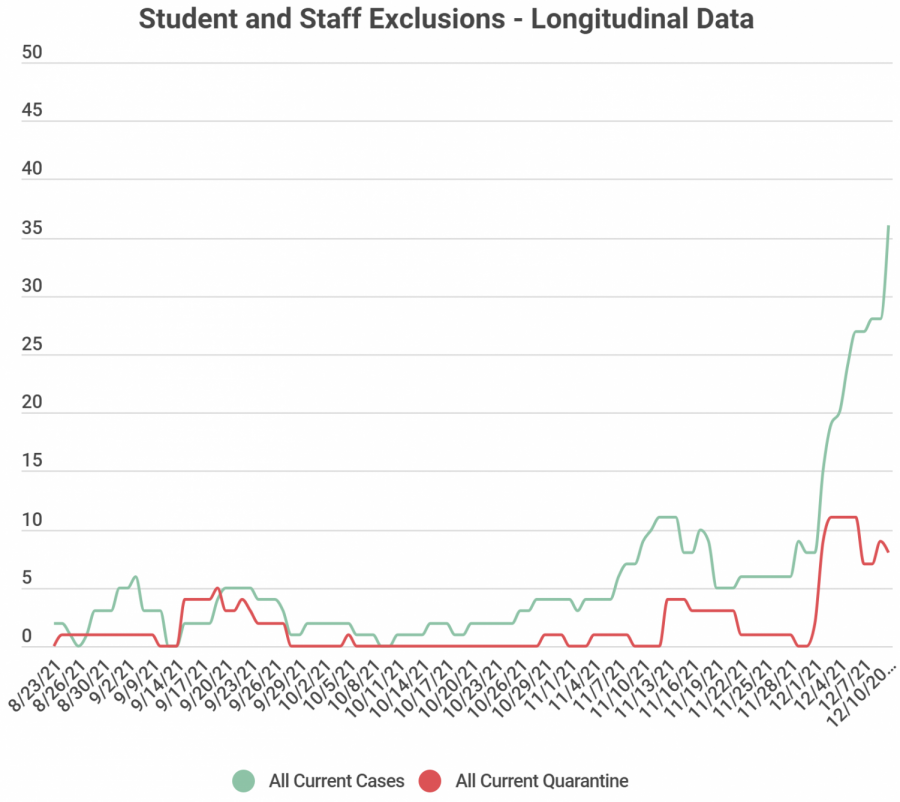Breaking News: New Trier hits record high 36 COVID cases; local townships follow suit
The amount of COVID cases have increased almost fivefold in last week
The new surge in cases trumps the previous high of 11 cases on Nov. 12
In a matter of days, COVID cases within the school climbed steeply. As of Friday, Dec. 10, the New Trier High School COVID-19 Data provided by the school shows that among students and staff there are 36 current cases of COVID, up from 8 cases on Dec. 1. What’s more alarming, however, is the rate at which the cases accumulated.
In a time period of 10 days, the cases at the school increased almost fivefold. Cases jumped from 15 on Dec. 2, to 19 cases on Dec. 3 to 20 cases on Dec. 4. On Dec. 6 and 7 the number of confirmed cases jumped to 27 , and finally to 36 cases on Dec. 10.
There are 8 current individuals quarantining as of Dec. 10. According to school protocol, vaccinated people “who are a non-household close contact” with someone with COVID do not have to quarantine, and those unvaccinated who have contacted someone with COVID have protocols to lower the time required to quarantine.
And these surges are not just within the school; feeder districts like Wilmette, Glencoe, Winnetka, and Northfield are also showing COVID case increases.
According to the Northwestern Medicine COVID Dashboard, for Winnetka/Northfield, the weekly new case rate per 100,000 people was 195.42 on Dec. 1; it now reads at 315.68 cases on Dec. 10—hitting a peak of 370.8 cases on Dec. 7.
In Wilmette, the number of new cases were 252.84 per 100,000 people on Dec. 10—almost double the 148.09 cases recorded on Nov. 27. Wilmette School District 39 also reported a total of 13 cases from Nov. 28 to Dec. 11 in six of their schools.
Glencoe’s case rates are currently at 289.52 cases on Dec. 10, a number that increased by 5 times in comparison to two weeks ago.
Statewide, COVID rates have more than doubled. According to the New York Times, Illinois’ seven day average was 3,024 cases on Nov. 28, in contrast with the 7,095 current cases recorded on Dec. 10.
The increase in cases correlates with Thanksgiving travel, considering that COVID detection can take three to five days after being exposed to the virus. This then raises the question of how COVID cases nationally and locally will change during and after winter break.
Complicating these numbers is the Omicron variant of COVID that has been detected around the country with the first Illinois case reported in Chicago on Tuesday Dec. 7.







































